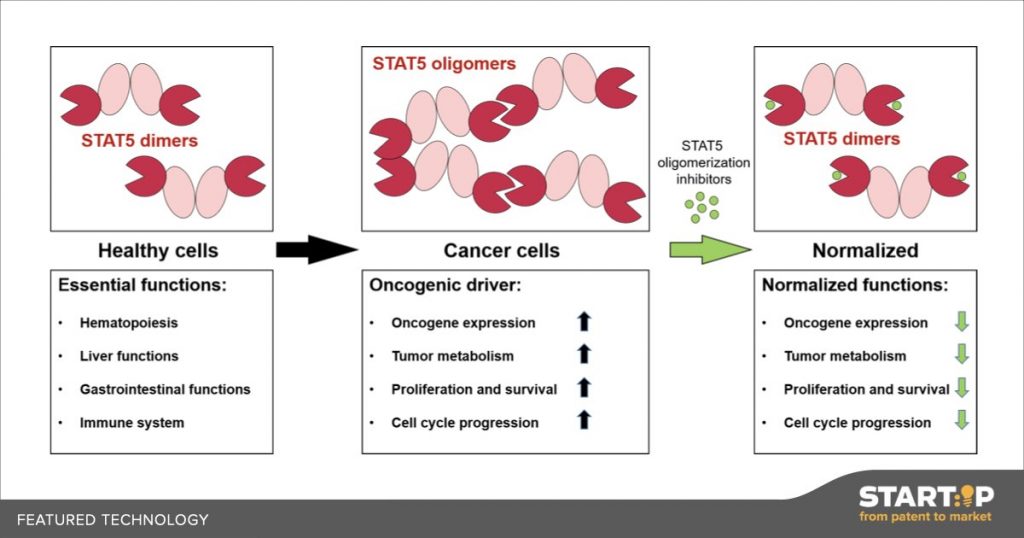Acute Myeloid Leukaemia (AML) is one of the deadliest blood cancers, with a 5-year survival rate of less than 25%. There has been no dramatic improvement in AML treatments since the 1970s, but this group of researchers has identified a druggable Achille’s Heel, specific to AML and other blood cancers.
START:IP
Technologie Kurzbeschreibung (nur Englisch)
Novel treatment for leukaemia
Novel targeted treatment for Acute Myeloid Leukaemia
Bookmark4
The current treatment options for AML are either not specific for the cancer cells, thereby causing damage to normal healthy cells, or offer only limited improvement on survival outcomes. However, it has been shown that AML cells are dependent on a cancer cell specific protein complex for their survival. The protein that forms this complex is called STAT5B, and in normal healthy cells, STAT5B helps to regulate many normal cell processes such as controlled growth and cell division. STAT5 normally functions as a dimer, but in AML, many STAT5 proteins aberrantly cluster together to form a so-called oligomer. The function of this oligomer is not well understood, but is clearly essential for the cancer’s survival, as this group of researchers have shown that if you can block the oligomers from forming, the AML cells do not survive. Importantly, housekeeping functions of STAT5 dimers are not affected. Hence, blocking STAT5 oligomerization is an Achille’s Heel specific for AML cells. This group is developing a small molecules that prevents the STAT5 oligomers from forming, and already have three promising compound series that have shown efficacy in both human cancer cells and in animal models. The ultimate goal is to develop an orally available drug. Since these STAT5 oligomers do not form in normal healthy blood cells, the treatment would be specific for the cancer cells, avoiding the side-effects commonly associated with chemotherapy.
If you click the button and fill out the form to be „matched“ with a technology, we will introduce you to the scientist / transfer manager of the respective research institution. In this way, you immediately have the chance to receive more detailed information and to start discussions about a possible joint project.

Mit dem Laden des Videos akzeptieren Sie die Datenschutzerklärung von YouTube.
Mehr erfahren

